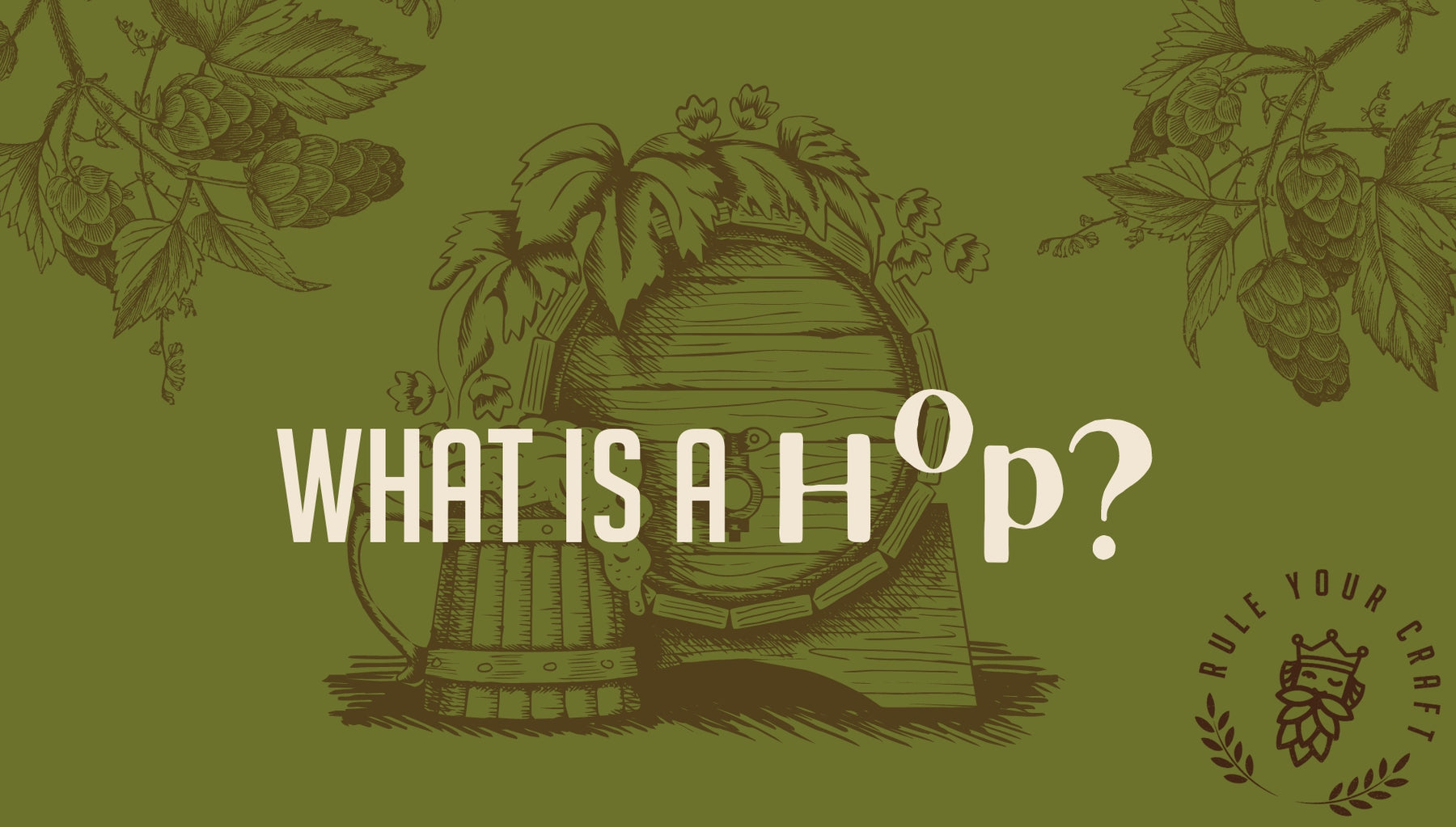
What Is A Hop?
WHAT ARE HOPS?
Hops are little green cones that pack a punch of flavour and aroma into our most loved beers. What exactly are they and how do you use them in brewing?
Hops are one of the single most important ingredients in beer. Technically to be beer a brew must contain hops. They have 3 main roles in the brewing process:
1. Add Bitterness - balancing out the sweetness for the malt.
- Add Aroma - they smell pretty amazing and are responsible for those delicious aromas in your favourite craft beers.
- Act as a natural preservative - making your beer last for longer.
Let’s be clear, it’s not the skip, jump, and leap kind of hop we are talking about here. We are talking about the flower of a hop plant, Humulus lupulus. These green little cones might not win any beauty contests, but when it comes to brewing beer, they're the VIPs – Very Important Plants!
Hops grow on hop bines (not vines - they climb with little hooked hairs rather than tendrils. Picture rows and rows of towering bines, reaching for the sky. Originally from Europe (with the four Noble varieties) they are now grown in Australia, New Zealand and America.
With over 50 different varieties of hops to choose from, it can be a bit overwhelming. It’s important to understand what hops do, then you can decide which is the best one for your brew.

Bitterness
Bitterness might sound like a bad thing, but in the beer world, it's the key to balance. Hops contribute bitterness by imparting compounds called alpha acids during the brewing process.
Brewers carefully select hops with the right alpha acid content to achieve the perfect balance between the sweetness of malt and the bitterness of hops.
Popular bittering hops include Pride of Ringwood, Magnum, East Kent (EK Goldings) and Sabro.
Aroma
Hops bring the party to your nose too! The aroma of hops can be intoxicating. From citrusy and floral to piney and earthy, hops offer a huge range of aromas.
Ever taken a sip of an IPA and felt like you were strolling through a pine forest? That’ll be the hops - mostly Mosaic or Nectaron.
The citrus and tropical fruit flavours of Pale Ales come from hops like Citra, Centennial, Eclipse and Galaxy (that’s the hop they use in Stone and Wood Pacific Ale).
In dark beers you’ll find hops like Fuggles and Willamette- which have earthy, spice and some floral notes.

Preservation
Back in the day (we're talking centuries ago), brewers discovered that adding hops to beer helped keep it fresher for a more extended period.
The natural antimicrobial properties of hops prevent the growth of unwanted microorganisms, acting as a guardian against spoilage.
Thank you hops for saving us from the horror of stale beer!
How do we brew with hops?
There are a few different ways that you can use hops in your home brew beers.
In the boil
If you are brewing from all grain, you can add hops during the boil process, when the wort is simmering. They will release their oils and resins and impart bitterness and aroma.
Timing is everything - If you add hops early in the boiling process, you'll get more bitterness. Toss them in later, and well you might not have enough bitterness and instead have too much flavour or aromas.
It's all about finding that sweet spot – or should I say, hoppy spot?
If you are brewing extract cans or fresh wort kits, this process will be completed by the brewery during production.
Dry Hopping
Dry hopping is a technique that's like giving your brew a second wind. After the initial boil or to your fresh wort kit or extract can kit, you throw in more hops during fermentation, leaving them to work their magic as the brew continues to ferment.
It's like a double-dose of hop goodness. The result? A beer that not only smells divine but also bursts with a fresh hop flavours.
Can you eat hops?
They sound amazing, so you might be wondering, can you eat hops?
Technically, yes you can, but I wouldn't recommend it. Hops are quite bitter, and unless you have a penchant for intensely bitter flavours, they're better left to their starring role in beer.
Be careful with them around your pets - hops are poisonous to dogs.
Hop to it
The humble hop - it's not just a botanical afterthought in the beer-making process.
It's the magical plant that adds bitterness, the artist that paints aromas, and the superhero that fights off spoilage.
Have some fun experimenting with different hops varieties in your home brews. Try different amounts of hops - 15g for a little bit of aroma to 100g for a flavour packed, hop forward brew. And mix up your combinations.
Find the flavours that you like - that’s part of the joy of home brewing, making a beer that’s unique to you.
Explore our range of hops (there are over 50, available by the gram) or check out our handy hop guide to help you choose which is the right hop for you.
https://cdn.shopify.com/s/files/1/0250/9501/2440/files/Hop_Guide_2023.pdf?v=1702942849
